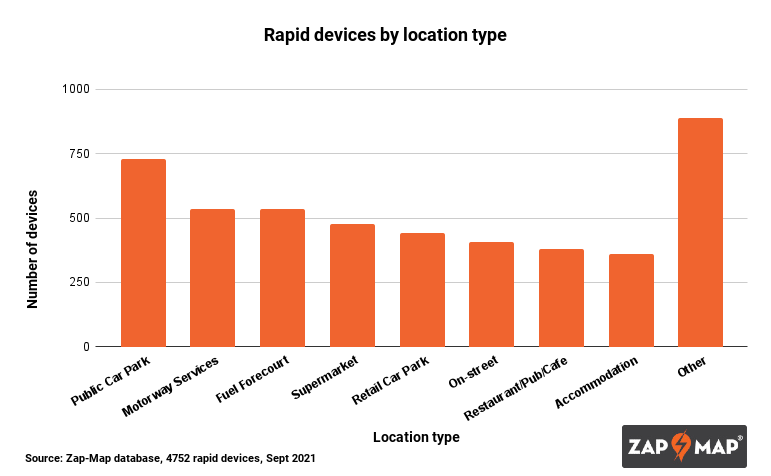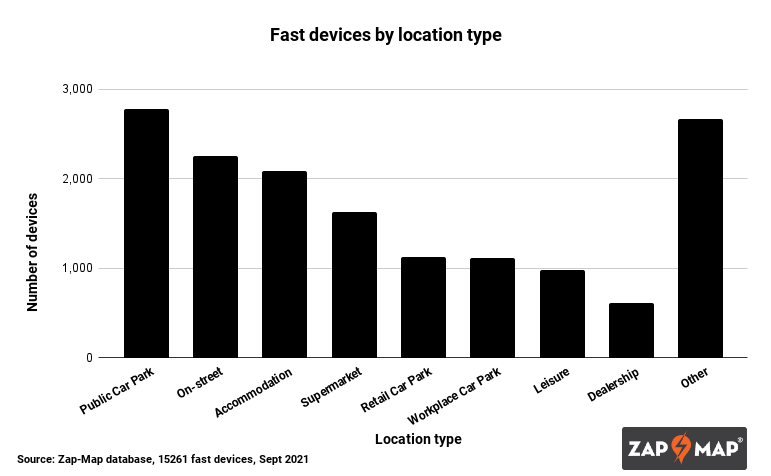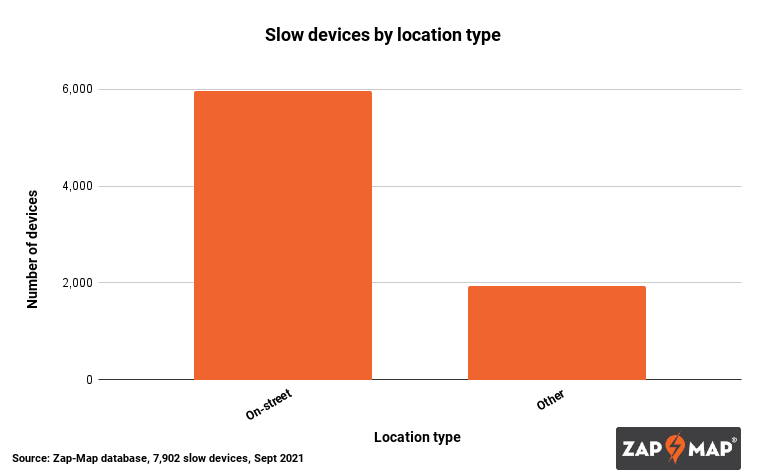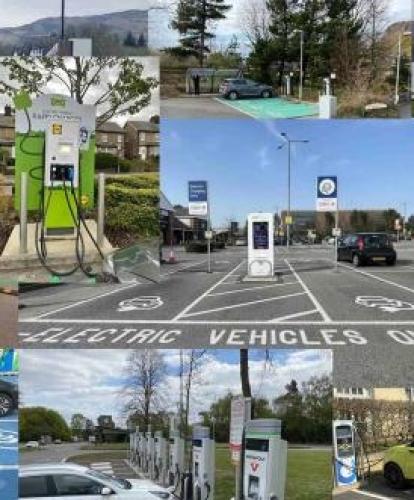There are now more than 25,000 electric vehicle (EV) charging devices across the UK according to the Zap-Map database. It’s a significant milestone. What’s more, you can find these devices across more than 16,000 charging locations, and between them they have over 45,000 connectors.
While 25,000 devices is a simple number to take in, the UK’s EV charging infrastructure is actually quite complex. First and foremost, our charging infrastructure is continually changing – and new charging locations, devices and connectors are appearing on a daily basis.
Moreover, the capacity of charging devices across the UK varies greatly, from slow and fast devices through to rapid and ultra-rapid. The purpose – and location – of each charging device is therefore of great importance. As such, it’s best to talk about devices in terms of en route, destination and base charging (this latter term encompassing on-street and community charging devices installed as a replacement for home charging). The three categories map broadly, if not directly, to the charger power.

Ultra-rapid DC chargers provide power at 100 kW or more.
With charging devices surpassing the 25,000 mark, below are a few examples of these types of devices. We also ask what might seem a simple question – where are all the EV chargers?
En route charging
En route charging is about getting your car charged up as quickly as possible, and for this the charge point needs to be either rapid or ultra-rapid. Most people think of this as the replacement for traditional fuel stations, and many are indeed located at motorway services or fuel forecourts. However, they are being installed at other types of locations too. Some well-known brands in this area include Starbucks, McDonalds, Marston’s pubs and Holiday Inns.
So far, 2021 has seen EV charging devices springing up across the country, not to mention plenty of announcements about upcoming installations. It’s fair to say, however, that some of these announcements get a lot more attention than others. As a general rule, we tend to be a lot more interested in news about high-power installations than those of the slower type.
Such announcements are prime examples of ‘en route’ charging – rapid and ultra-rapid devices capable of delivering a useful amount of charge in more or less half an hour mid-journey. Motor Fuel Group, for instance, announced in March that it will invest around £400 million in 3,000 ultra-Rapid 150kW and 350kW devices across its MFG EV Power network. 62 are up and running already.
In July, GRIDSERVE also revealed hotly anticipated plans to transform EV charging infrastructure in the UK, and officially launched the GRIDSERVE Electric Highway. Once complete, this will entail a UK-wide network of more than 50 ‘Electric Hubs’ with 6-12 x 350kW chargers in each, plus almost 300 rapid chargers installed across 85% of the UK’s motorway service stations.
Where are all the rapid and ultra-rapid charging points?

As you can see in the chart above, car parks – both public car parks and retail car parks – account for almost 25% of high-powered charging options.
It should come as no surprise that en route charging locations such as motorway services, with 536, and fuel forecourts, with 535, come in second and third place respectively. Supermarkets, restaurants and accommodation also account for a significant proportion of rapid devices, while on-street rapid chargers are being deployed in cities to support taxis and regular chargers as well.
Destination charging
Although ‘en route’ announcements from GRIDSERVE (not to mention InstaVolt) get plenty of airtime, news from other charging providers can of course get EV drivers excited too. This is especially true if the new installations have anything to do with shopping, Franklin Energy’s upcoming EV charging hub at Brent Cross Shopping Centre, for example.
Of course, as you’ll see in the chart below, this type of charging isn’t only to do with retail. When EV drivers are out and about, many look to top up their vehicles at their destination – or indeed anywhere they are parking for a few hours. These are typically, but not exclusively, ‘fast’ charge points that will charge an EV efficiently over a few hours rather than high-powered chargers.
Residential streets, hotels and supermarkets are all locations where you’d expect to find a fast charger capable of charging your car to 80% in a couple of hours.
Where are the UK’s fast EV chargers?

As with rapid and ultra rapid chargers, car parks – both public and retail – account for just over 25% of fast charging devices. On-street and accommodation follow with 2,257 and 2,084 respectively.
Base charging
As many EV drivers will tell you, one of the best ways to charge your car is overnight, on your home charger. However, this simply isn’t an option for many people living in flats, high-rises or rented accommodation.
As you’ll see reflected in the chart below, this is where ‘base’ charging comes in. Essentially, this encompasses on-street and community provision acting as a replacement for home charging – think char.gy and ChargeMyStreet, for instance.
One laudable project worth mentioning here is in Lambeth, where Connected Kerb has installed 22 on-street EV chargers across 11 council estates in the borough to provide easy access to public charging for those without off-street parking.
Where are the slow charging devices in the UK?

While fast and rapid devices show a relatively even spread across the various location types, it’s a different picture altogether with slow charging devices.
Slow devices predominate in ‘base’ charging, with on-street provision seeing by far the most slow devices – 5,969 in total. The majority of these belong to ubitricity, whose 3,680+ lamppost chargers you’ll mostly find in London.
At the other end of the scale, you’ll probably be pleased to hear that there are no slow devices at motorway services, and only four at fuel forecourts!
EV charging devices on Zap-Map
It’s worth mentioning that this data does not include the increasing number of domestic charge points that are being shared by EV drivers – one example of this is the Zap-Home network on Zap-Map.
Wherever you look, the rate of change has certainly picked up over the past ten years. See our Statistics page for a visual representation of this. 2021 has been no different. It’s certainly been a busy year so far for the EV industry – and things only look to pick up further.



